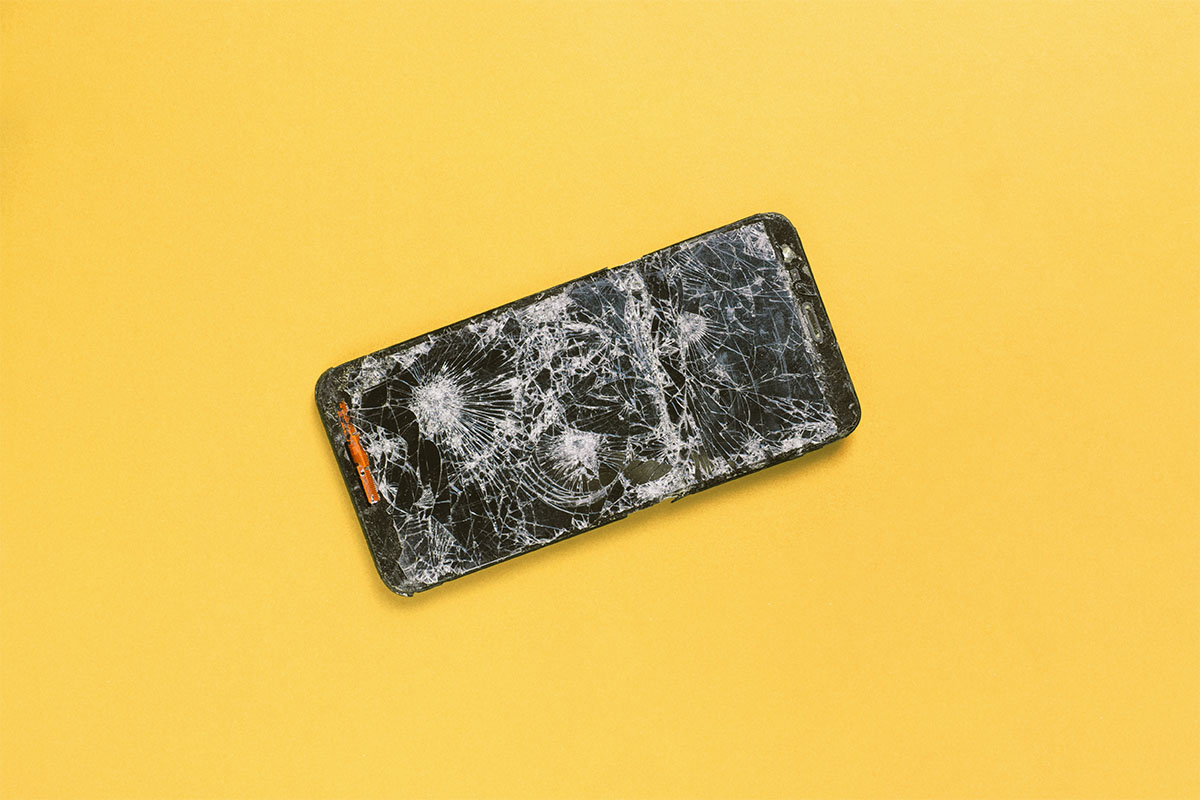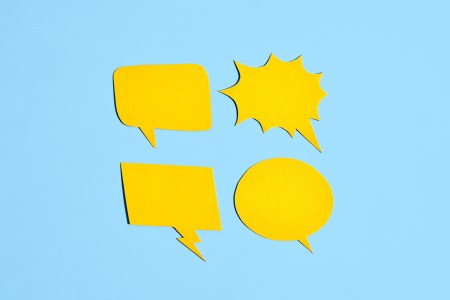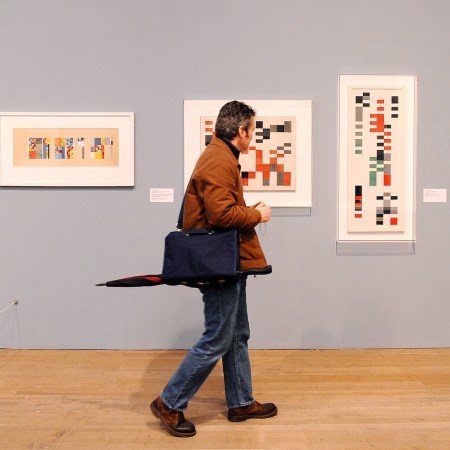I spend four hours and 30 minutes on my phone every single day. On average, I “pick it up” 131 times every 24 hours. My personal record this year is 172 pick-ups, which happened on January 29. I could’ve sworn I’d spent that day running through snow and sitting in bars with friends, but I guess I spent a good chunk of it fishing for a phone in my pocket.
Those numbers don’t make me proud or happy, but they don’t shock me either. I’ve had an iPhone at my hip since before I could drink or vote. I’m not particularly skilled at using it — I don’t have TikTok, I only just set up that facial recognition feature, I need help turning the flash on when taking group photos — but I do use it a lot. It’s a tool, it’s a distraction, it’s a reward. It’s the last thing I look at before bed and the first thing I look at when I wake up. Whenever I’ve interrogated this relationship, either in my brain or out loud, I’ve always come to the conclusion that I should cut back. But that goal has only ever manifested in minor, ephemeral ways.
For instance, I’ll tuck my phone in a drawer during a family gathering, or leave it in the car when out on a hike. Sometimes, when exploring a different city with a group of friends, I’ll keep it in the hotel or Airbnb, so I can “fully immerse” myself in whatever we’re seeing for the day. These strategies are a salve for my brain, and I credit them for fine-tuning my engagement with a cousin, a moment or a landmark. But they can also leave me feeling guilty. After all, I end up being the one who couldn’t take the photo, or order the group an Uber, or Google the trailhead. I’m left wondering if intentional disconnection in a hyper-connected world is possibly an act of selfishness.
Not to mention, once my little diversion is over, the phone binge is always one for the ages. I overload on everything I’ve missed, or at least perceived that I missed, until I’m satisfied. It’s a fast followed by a feast, which can leave me feeling like I never left the phone alone to begin with.
Time for a Change…and an Experiment
Recently, I decided to gather more information and introspection on my relationship with my phone. How did I get here? What do I use it for that’s actually instrumental in my day-to-day? Are there certain apps making a positive impact on my life? What’s something I’m having trouble kicking to the curb, and why? In order to attempt to answer those questions, I staged a small experiment, which has its roots in research conducted by a smattering of neuroscientists and evolutionary biologists.
In short, I ditched my phone for three days. No pick-ups, no texts, no quick checks. Just 72 hours of absolute darkness. For the entirety of the experiment, I didn’t even know where it was. I texted a few friends and family that I’d be off the grid for a bit, to email me in the case of an emergency, and then handed it off to a family member, who hid it in a corner of the house. After that three-day break, I was reunited with my beloved rectangle. How did it go? Did I find inner peace? Is my brain rewired? Or am I still a slovenly, Apple-obsessed lush? Well, let’s call it a bit of a mixed bag.
A Guide to the Best Life Hacks From the Last 100 Years
Miracle mornings, presidential matrixes and more. These approaches can actually change your life.The Methodology
Why a 72-Hour Break?
I should note that my three-day experiment wasn’t an arbitrary selection of days. It dovetailed from research into the “three-day effect,” so dubbed by University of Utah’s David Strayer, Ph.D., which focuses as much on nature’s capability to reset the brain as a phone’s tendency to overload it. Strayer, as noted in Michael Easter’s much-celebrated book The Comfort Crisis, decided to investigate a sensation he’d long been anecdotally familiar with from backpacking in southern Utah: “the buzz…that altered spectrum of thinking that seems to enhance perception and peacefulness and dial back time and space.”
In other words, the creativity and calm that comes from a long weekend spent somewhere without cell towers. Strayer suspected the feeling might be more than just a marketing gimmick for digital detox retreats, and potentially a prescription for a decluttered brain. So, way back in 2012, at which point iPhones had only been a part of our social and professional fabric for five years, Strayer and other researchers conducted an experiment with a troupe of Outward Bound backpackers.
He had half of the students take a Remote Associates Test (or RAT, a 40-question word-association game meant to measure creativity) before a three-day backcountry expedition, and the other half directly after. He expected higher scores from the second group of test-takers, but he was floored when they performed 50% better, on average, than the first group. In the decade since that initial study, the three-day effect has been further proven by studies (which have focused on everything from its positive impact on stress levels in white-collar employees to PTSD in veterans), discussed on podcasts and featured in self-help books.
It invites two clear conclusions: A) getting off the grid is good for your brain and B) the effects can last well beyond those three days. This has led to a fitness trend where some are intent on “rewilding” their bodies and brains. (If that term sounds familiar, know it’s different in this context than a process associated with conserving public lands, and, thank god, extremely different than a controversial movement where people turkey-baste the feces of the planet’s last remaining hunter-gatherers up their rectums. You can read more about that here, though I’m not sure why you’d want to.)
When most people look to rewild themselves using the three-day effect, they’re taking a plunge into discomfort far from home. I wanted to take a more casual approach. Could I attain a sense of calm and a boost of creativity without leaving the house? Specifically, by briefly getting rid of the machine that routinely disrupts my days?
The Addiction Is Real
I didn’t go to a retreat in Ojai or Fiji. And I didn’t pair the days with some athletic or mindful feat — such as a guided pilgrimage along the Camino de Santiago, which a lot of people pay a lot of money to do. I also came nowhere near the exploits of Easter, who spent his own three-day experiment on a caribou hunt in Alaska. But that was sort of the point. Some fitness influencers pitch the magic of a 72-hour break without even acknowledging the whole “getting lost in nature” side of things. For instance, Joe De Sena, the founder of the Spartan Race, swears by a routine he calls “3:30:3”: three days without a phone, 30 burpees a day, three cold showers a day. He calls it a “life-cleaning challenge,” and guarantees you’ll feel better by the end of it. “Get ready to be more focused, less foggy, more fit, and more productive,” he writes. “All wins in my book.”
For my detox, I was relieved of my phone on Sunday at noon, had Monday and Tuesday fully off, and was given it back at noon on Wednesday. It’s impossible to pinpoint a single prevailing emotion that I felt throughout this period, but I’ll confess that it started with a measure of withdrawal. While phone overuse isn’t officially designated as an addiction by the American Psychiatric Association, The New York Times reported that “there is a growing number of mental health specialists who recognize that people can get addicted to their smartphones.”
Over the years, we’ve learned more and more about the design philosophy behind a platform like Instagram. The app was originally conceived by a group of Silicon Valley app developers who are fluent in what’s known as “behavioral design.” Back in 2014, a Stanford University lecturer explained to Business Insider, somewhat ominously, that Instagram founder Kevin Systrom “knows a lot.” Systrom himself went to Stanford, and majored in symbolic systems, “a field that lies at the intersection of psychology and computer science.”
At its very core, Instagram is designed to be addictive. Ex-employees of Apple, Facebook and Google have dished on the three-pronged approach that developers shoot for when programming the apps we can’t get enough of: sufficient motivation, an action and a trigger. In Instagram-speak, this could be summed up as a user’s desire for something to happen (they’ve come to associate Instagram with the release of happy neurotransmitters like dopamine and serotonin), a user’s ability to interact with it without any issue (open the app with a click of the button and like something right away) and a user’s incidental relationship to the app (in the form of vibrations and notifications).
As an app developer named Peter Mezyk summarized: “The success of an app is often measured by the extent to which it introduces a new habit.”
What Is “Chatter”? We Explain How to Take Back Your Brain.
Four practical methods for quieting the noisy mindThe Results
Dealing With Withdrawal
I quickly learned the extent of my habits on the Sunday afternoon, as I weathered a flustered, irritable mood that extended well into Monday. Timing obviously played a role there, but not in a way, I think, that should discount what I was feeling. If anything, I found it illuminating. I hadn’t realized how much I relied on my phone the night before another daunting week of work. That’s part of the modern appeal of social media: it offers opportunities to commiserate over shared dread (e.g., Sunday Scaries) and can serve as a reminder, however hollow, that you’re not alone. But does that ritual actually link us to others? Or is it just a self-medicating mechanism? I suspect it’s a bit of both.
The trickiest part about this experiment was that I still had work to do, all of which occurs on my laptop. I don’t own an iPad, so I had no “cousin” to the iPhone handy, but a computer is a screen all the same, and conventionally demands my attention for eight hours or more on a weekday. Fortunately, I’m not logged in to many apps, services and social accounts on my work laptop, so I couldn’t exactly simulate my phone’s experience online. But I did find myself spending more time on my computer, to read articles and fiddle around with my calendar, as if my subconscious was trying to meet my usual quota of screen time. It’s hard to see a world where only sacrificing one’s phone could possibly constitute a proper three-day effect. If anything, it made me somewhat horrified that those iPhone stats (4.5 hours, 131 pick-ups a day) were supplementing my usual responsibilities on the computer.
Still, I did discover some measure of rest and reset throughout my days, especially when I went outside, or prepared for bed. One of Strayer’s advisers, Rachel Hopman, a psychologist who studies “the theory of attention restoration by exploring possible neurological changes with exposure to various natural settings,” explained the concept of “soft fascination” in Easter’s book. It’s a state where we’re able to fully appreciate and process the sensory details of the outward world. Imagine a dog scuttling from tree trunk to a drain, sniffing all the while. For human adults, the goal probably isn’t to go around smelling grass, but to simply allow yourself to take a backseat to everything going on around you, to let the sun, wind and trees be the protagonist for a change. We’ve long recommended daily constitutionals for this purpose, but they come with a caveat: you have to leave your phone at home.
I went out for a daily walk each day. I took ice baths in my backyard. I went for runs without music to distract me from the pain, or a GPS to tell me how exactly how far I’d traveled. Some of it was pretty boring. And on Monday, when the weather was trash, it was pretty bleak. Not much to look at. But I noticed that the phantom “itch” to reach for my phone, which was powerful in the first 24 hours, faded more and more as the experiment wore on. This was at its most effective at night, when I would pull out an analog alarm clock, set it for the morning and turn the lights off for bed. No getting sucked into Instagram Reels or doomscrolling the latest Russia news. I was relieved of my duties to find meaning or solve the world’s problems right before bed. (My melatonin levels likely benefited in kind.)
Phone Use Bends Time
Overall, my days felt longer, which personally confirmed a theory I’d had going in: phone use appears to bend time. It turns minutes into seconds, erasing a quarter of an hour here or there without much effort. On commutes, that’s an enviable asset. No wonder everyone’s head is buried in a device on the subway or on a flight. But when you’re on the toilet, or on a time crunch to finish a project, it’s the last thing you need. Indeed, I found that my daily tasks got more manageable as I got used to life without a phone. It wasn’t an option, so I might as well plow on with my work. This was always less of an issue at the office, where a day spent on one’s phone was more or less a middle finger to one’s manager, but in a work-from-home landscape, self-discipline is more important than ever.
There were a few things I missed, which I do believe enrich my life. I track my sleep with WHOOP, my metabolic variance with Lumen, and my exercise with Strava, FightCamp and Centr. I also have a few group chats with friends that pop off throughout the workday. Those are always good for a laugh. During the peak of quarantine, those chats grew “closer,” and I’ve come to rely on them when I’m feeling distant or lonely.
And that’s to say nothing of functional concerns. I have no dependents, and had the privilege of disappearing for a few days without any consequences. I’m not in a long-distance relationship; I don’t have a pre-schooler who could have an allergic reaction or a college-aged child who’s missing home. I didn’t even have to leave the house for work. Friends who sent me Venmo requests had to wait a few extra days. I wouldn’t have been able to call a rideshare or order food in in a pinch, and god forbid I found myself in a cafe with a barista who really knew how to sling a playlist, there was no way for me to discreetly Shazam the tune. (I’m kidding. Kind of.) Plus, my phone is a library unto itself, a database of notes, screenshots and reminders that help me keep track of important dates, pitches for upcoming stories and birthday gifts I should start looking into. Losing that, even for a bit, made life slightly more difficult.
One last confession: when my time was officially up, I spent about an hour straight on my phone. There could’ve been a double rainbow outside my window and I wouldn’t have looked up from the 118 texts and dozens of other assorted notifications waiting for me on my screen. This response, which I literally felt powerless to abstain from, reminded me of the logic propelling the nutritional concept of intuitive eating, which discourages fasting (or viewing eating as inherently “bad”), because it can lead to extreme, “who cares” binges the second you actually break that fast.
Was It Worth it?
At first, I was left wondering if the experiment had been worth it at all. I will in all likelihood post another 172 pick-ups one of these days. Still, successfully completing a few days away gave me confidence that the world will not fall apart if I choose to step back again. And I’ve already learned that I do want to stick this thing in a drawer again, and document the impact of different variables. What does a phone-less life feel like when paired with three days away from a computer, too? Or a full month? How transformative does all of this feel out in nature, where the Verizon Fios cables end? It’s tempting to fix our micro-addictions and afflictions with grand gestures (think about those grandiose fitness resolutions we’re so fond of making each year), but you might find it more instructive to try a piecemeal approach. Interrogate the three-day effect at different stages, until you feel comfortable really going dark.
Some online reviews of the three-day effect promise that you’ll become a “nomad” by the third day. If you can WFH from a national park, maybe that’s the case. If you choose to take a break yourself, I wouldn’t expect it to rewire your brain. And yet, don’t be surprised when it reminds you what reality used to be, and what it’s still capable of being. My phone is a useful little device. It certainly has it moments. But it doesn’t deserve all of them.
The Charge will help you move better, think clearer and stay in the game longer. Subscribe to our wellness newsletter today.



























